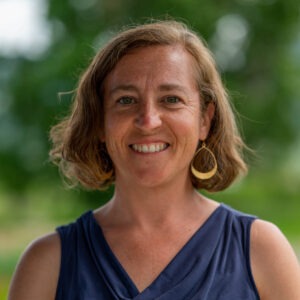The six-county area of southern Colorado known as the San Luis Valley is home to the headwaters to the Rio Grande watershed, growing communities, and fire-prone landscapes.
To better understand the impacts of wildfire to communities, watersheds, and quality of life, partners in the Valley worked with Headwaters Economics to develop an interactive website and map series, Living with Wildfire in the San Luis Valley.
Wildfire, Watersheds, and the Wildland-Urban Interface in the San Luis Valley
Since 2000, nearly 300 square miles have burned in the San Luis Valley, including Colorado’s largest wildfire in 2018. This vast Valley includes six counties (Alamosa, Conejos, Costilla, Mineral, Rio Grande, and Saguache) in southern Colorado and encompasses grass and shrub ecosystems in the valley bottom to high-elevation forests in the surrounding mountains.
With more than 45,000 residents in scattered towns and villages, the communities of the San Luis Valley have been threatened by several wildfires over the last few decades which have caused evacuations and destroyed homes—including more than 200 homes in the 2018 Spring Creek fire. The Living with Wildfire in the San Luis Valley map series shows the extent of fires over the last decade.
The number of homes has increased 80 percent since 1980, and the highest rates of residential growth are in areas of moderate and high wildfire risk. Typical of the West, San Luis Valley wildfires are more severe and cause more damage in part because of housing development trends that put people in harm’s way and increase the likelihood for human-ignited fires.
Housing trends in the Valley are pushing more communities into fire-prone areas, expanding the region’s wildland-urban interface. Living with Wildfire in the San Luis Valley provides a new map of the wildland-urban interface and data about housing trends to help inform decision-making by fire managers, land use planners, and elected officials.
Wildfire poses threats to water quality, cultural heritage, and quality of life at the headwaters of the Rio Grande River. The San Luis Valley is headwaters to the Rio Grande. Wildfire in the valley has the potential to not only impact the valley’s residents, but also damage water quality for more than 6 million downstream users. Sedimentation following wildfires can damage the entire watershed. Users can explore the importance of Valley watersheds in Living with Wildfire in the San Luis Valley interactive maps.
Communities in the San Luis Valley are reducing risk through improved land use planning. In 2017, the Valley was accepted into Community Planning Assistance for Wildfire (CPAW), a program of Headwaters Economics that provides land use planning, risk assessments, training, and custom research to communities to help better plan the wildland-urban interface.
As a part of the program, stakeholders in the San Luis Valley—including representatives from all six counties, the Colorado State Forest Service, and Colorado Division of Fire Prevention and Control—identified the need for improved mapping tools to help the counties better define their wildland-urban interface, identify areas of highest hazard to inform land use planning decisions, and communicate wildfire threats to the community.
Headwaters Economics partnered with Gage Cartographics and SLV GIS to develop the Living with Wildfire in the San Luis Valley map series. Also see our Methods and Data Sources.
The website is designed to share information about wildfire history, housing development, and watershed health in the San Luis Valley, and share mapped information about wildfire risk with residents. The six-county area that comprises the Valley has a unique regional partnership with cross-county collaborations spanning elected leadership, wildfire response, emergency preparedness, and land use planning. The maps and tools developed by stakeholders through CPAW will help partners better understand and communicate the risks wildfire poses to communities and watersheds.
